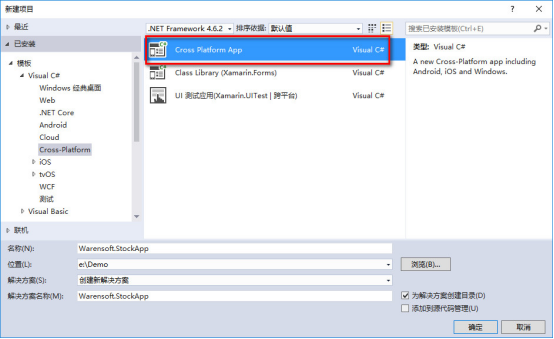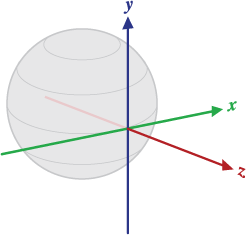編輯:關於Android編程
本文所述為一個Android上傳文件的源代碼,每一步實現過程都備有詳盡的注釋,思路比較清楚,學習了本例所述上傳文件代碼之後,你可以應對其它格式文件的上傳。實例中主要實現上傳文件至Server的方法,允許Input、Output,不使用Cache,使Androiod上傳文件變得輕松。
主要功能代碼如下:
package com.test;
import java.io.DataOutputStream;
import java.io.FileInputStream;
import java.io.InputStream;
import java.net.HttpURLConnection;
import java.net.URL;
import android.app.Activity;
import android.app.AlertDialog;
import android.content.DialogInterface;
import android.os.Bundle;
import android.view.View;
import android.widget.Button;
import android.widget.TextView;
public class Main extends Activity {
/* 變量聲明
* newName:上傳後在服務器上的文件名稱
* uploadFile:要上傳的文件路徑
* actionUrl:服務器上對應的程序路徑 */
private String newName="image.jpg";
private String uploadFile="/data/image.jpg";
private String actionUrl="http://l27.0.0.1/upload/upload.jsp";
private TextView mText1;
private TextView mText2;
private Button mButton;
@Override
public void onCreate(Bundle savedInstanceState)
{
super.onCreate(savedInstanceState);
setContentView(R.layout.main);
mText1 = (TextView) findViewById(R.id.myText2);
mText1.setText("文件路徑:\n"+uploadFile);
mText2 = (TextView) findViewById(R.id.myText3);
mText2.setText("上傳網址:\n"+actionUrl);
/* 設置mButton的onClick事件處理 */
mButton = (Button) findViewById(R.id.myButton);
mButton.setOnClickListener(new View.OnClickListener()
{
public void onClick(View v)
{
uploadFile();
}
});
}
/* 上傳文件至Server的方法 */
private void uploadFile()
{
String end = "\r\n";
String twoHyphens = "--";
String boundary = "*****";
try
{
URL url =new URL(actionUrl);
HttpURLConnection con=(HttpURLConnection)url.openConnection();
/* 允許Input、Output,不使用Cache */
con.setDoInput(true);
con.setDoOutput(true);
con.setUseCaches(false);
/* 設置傳送的method=POST */
con.setRequestMethod("POST");
/* setRequestProperty */
con.setRequestProperty("Connection", "Keep-Alive");
con.setRequestProperty("Charset", "UTF-8");
con.setRequestProperty("Content-Type",
"multipart/form-data;boundary="+boundary);
/* 設置DataOutputStream */
DataOutputStream ds =
new DataOutputStream(con.getOutputStream());
ds.writeBytes(twoHyphens + boundary + end);
ds.writeBytes("Content-Disposition: form-data; " +
"name=\"file1\";filename=\"" +
newName +"\"" + end);
ds.writeBytes(end);
/* 取得文件的FileInputStream */
FileInputStream fStream = new FileInputStream(uploadFile);
/* 設置每次寫入1024bytes */
int bufferSize = 1024;
byte[] buffer = new byte[bufferSize];
int length = -1;
/* 從文件讀取數據至緩沖區 */
while((length = fStream.read(buffer)) != -1)
{
/* 將資料寫入DataOutputStream中 */
ds.write(buffer, 0, length);
}
ds.writeBytes(end);
ds.writeBytes(twoHyphens + boundary + twoHyphens + end);
/* close streams */
fStream.close();
ds.flush();
/* 取得Response內容 */
InputStream is = con.getInputStream();
int ch;
StringBuffer b =new StringBuffer();
while( ( ch = is.read() ) != -1 )
{
b.append( (char)ch );
}
/* 將Response顯示於Dialog */
showDialog(b.toString().trim());
/* 關閉DataOutputStream */
ds.close();
}
catch(Exception e)
{
showDialog(""+e);
}
}
/* 顯示Dialog的method */
private void showDialog(String mess)
{
new AlertDialog.Builder(Main.this).setTitle("Message")
.setMessage(mess)
.setNegativeButton("確定",new DialogInterface.OnClickListener()
{
public void onClick(DialogInterface dialog, int which)
{
}
})
.show();
}
}
讀者如果覺得功能不足的話可以對代碼進行擴展與完善,使之更加符合自身的應用需求。
 利用Warensoft Stock Service編寫高頻交易軟件
利用Warensoft Stock Service編寫高頻交易軟件
無論是哪種交易軟件,對於程序員來講,最麻煩的就是去實現各種算法。本文以SAR算法的實現過程為例,為大家說明如何使用Warensoft Stock Service來實現高頻
 android Gallery組件實現的iPhone圖片滑動效果實例
android Gallery組件實現的iPhone圖片滑動效果實例
實現的效果圖,可左右滑動:一、先在將Gallery標簽放入:復制代碼 代碼如下:<?xml version=1.0 encoding=utf-8?&
 位移傳感器
位移傳感器
Android平台提供了一些傳感器讓你能監測設備的移動。它們中的兩個傳感器總是基於硬件的(加速度和陀螺儀),另外的這類這些傳感器中的3個即能使用基於硬件的也能使用基於軟件
 Android中使用ListView繪制自定義表格技巧分享
Android中使用ListView繪制自定義表格技巧分享
先上一下可以實現的效果圖 要實現的效果有幾方面 1、列不固定:可以根據數據源的不同生成不同的列數 2、表格內容可以根據數據源的定義合並列 3、要填寫的單元格可